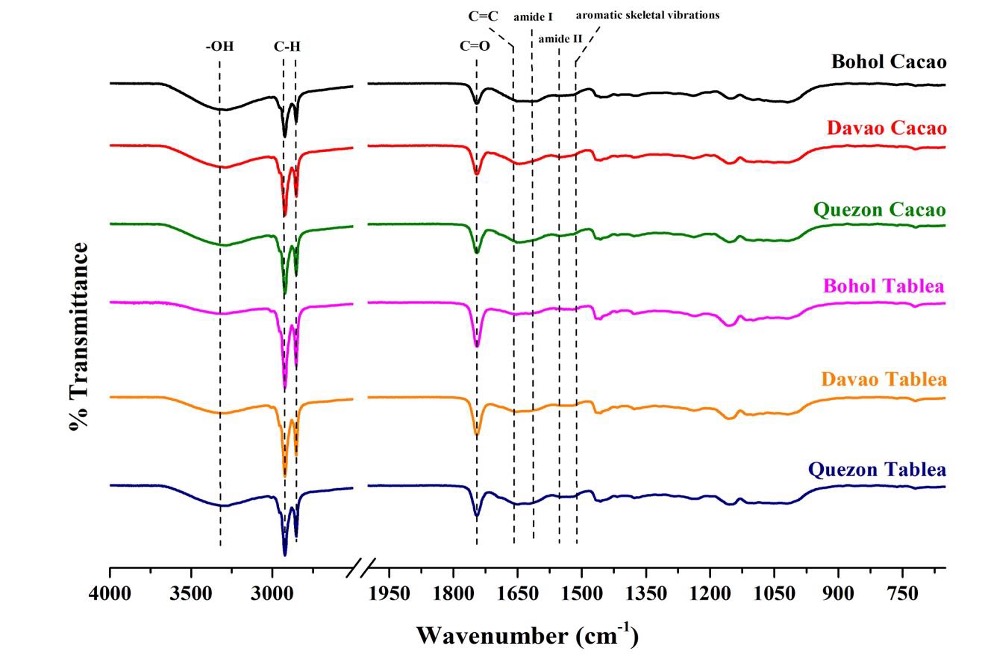VOLUME 17 NUMBER 2 (July to December 2024)

SciEnggJ. 2024 17 (2) 175-188
available online: July 22, 2024
DOI: https://doi.org/10.54645/2024172WRS-32
*Corresponding author
Email Address: jpnunez@up.edu.ph
Date received: January 26, 2023
Date revised: March 28, 2023
Date accepted: April 19, 2024
ARTICLE
Chemical composition and thermal characterization of selected Philippine cacao (Theobroma cacao L.) and tablea
Arts and Sciences, University of the Philippines Manila, Padre
Faura Street, Ermita, Manila 1000
2Chemistry Department, College of Science, De La Salle University,
Taft Avenue, Manila 1004
Cacao (Theobroma cacao L.) is a high-value crop grown in tropical countries where it is processed to make products like chocolate. In the Philippines, cacao is also used to produce a traditional product from cacao liquor called tablea. In the production of tablea, it is necessary to investigate the composition and physicochemical properties to evaluate its nutritional attributes, and product quality. Hence, this study investigated the composition and thermal properties of cacao and Philippine tablea from three different locations through proximate composition analysis, gas chromatography-mass spectrometry (GC-MS), Fourier transform infrared spectroscopy (FTIR), differential scanning calorimetry (DSC), and thermogravimetric analysis (TGA). Results showed a decrease in moisture from cacao to tablea due to roasting. GC-MS analysis revealed a total of 27 compounds from all the samples analyzed. The presence of polysaccharides, lipids, proteins, and phenolics was evident in all mid-FTIR spectra samples. The melting profile indicated that cocoa butter polymorph form V was the native structure of the cocoa butter in all samples, which is ideal for cacao-derived products. Additionally, repeated rapid heating and cooling of the cacao and tablea samples favored the formation of cocoa butter polymorph forms of lower stability. The TGA profile of cacao and tablea revealed the temperature ranges attributable to the degradation of polysaccharides, cocoa butter, and proteins. The DSC and TGA thermograms of cacao and tablea counterparts indicate similar phase transitions and thermal degradation events. This study provided insights into the composition and thermal properties of cacao and Philippine tablea, which can be used as a baseline for quality and product development in the country.
© 2025 SciEnggJ
Philippine-American Academy of Science and Engineering